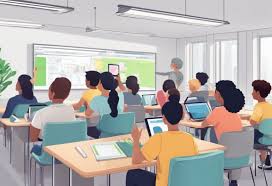In today’s evolving educational landscape, the role of a teacher extends far beyond traditional textbooks and worksheets. Modern educators are increasingly incorporating various media formats, including kids animated shows, to create engaging learning environments that resonate with young minds. This strategic integration of visual storytelling helps bridge the gap between entertainment and education, capturing children’s attention while delivering valuable lessons in an accessible format.
The relationship between teachers and animated content has grown stronger in recent years, particularly as educational research continues to demonstrate the cognitive benefits of visual learning. Experienced educators recognize that when children connect with characters and storylines, they often retain information more effectively than through conventional teaching methods alone. By carefully selecting animated content that aligns with curriculum objectives, teachers can reinforce classroom concepts while nurturing imagination and critical thinking skills.
Animated shows offer unique advantages in educational settings that traditional teaching materials sometimes lack. The combination of vibrant visuals, memorable characters, and engaging narratives creates multisensory learning experiences that can reach diverse learning styles. For students who struggle with text-based learning, animation provides an alternative pathway to understanding complex concepts. This visual medium can simplify abstract ideas through metaphor and storytelling, making difficult subjects more accessible to young learners.
Beyond academic content, animated programs frequently incorporate valuable social-emotional lessons. Shows like “Daniel Tiger’s Neighborhood” explicitly teach emotional regulation strategies, while others like “Arthur” address complex social situations including friendship challenges, bullying, and cultural differences. Thoughtful teachers can use these narratives as launching points for meaningful classroom discussions about empathy, conflict resolution, and diversity—skills that are increasingly recognized as essential components of a complete education.
The strategic implementation of animated content requires careful consideration from educators. Rather than using animation as merely a passive viewing activity, effective teachers structure lessons around specific clips or episodes. They might pause the program to ask prediction questions, discuss character motivations, or connect storylines to curriculum objectives. This active viewing approach transforms entertainment into a powerful teaching tool that engages students’ higher-order thinking skills.
Cultural representation within animated programming has improved significantly in recent years, offering teachers valuable resources for building inclusive classroom environments. Shows featuring diverse characters, family structures, and cultural traditions allow all students to see themselves reflected in media while exposing children to perspectives different from their own. This representation supports the development of cultural awareness and empathy—crucial skills in our increasingly connected global society.
The technological fluency of today’s students presents both challenges and opportunities for educational approaches. Children accustomed to fast-paced media may struggle with traditional teaching methods that seem slow by comparison. Forward-thinking teachers recognize this shift and strategically incorporate elements that students find engaging while maintaining educational integrity. Rather than competing with entertainment media, they leverage children’s interest in animation to enhance learning experiences.
Parent-teacher partnerships can be strengthened through thoughtful conversations about media consumption. Educators can provide guidance to families about high-quality animated programming that extends classroom learning, creating continuity between school and home environments. By sharing specific recommendations and discussing how to engage children in conversations about media content, teachers help parents become more active participants in their children’s educational journey.
Professional development opportunities increasingly include training on integrating media literacy into curriculum. Teachers learn to evaluate animated content for educational value, age-appropriateness, and alignment with learning objectives. This critical assessment helps educators make informed choices about which programs truly support their teaching goals rather than simply filling time. As media continues to evolve, ongoing professional learning ensures teachers remain equipped to navigate this changing landscape.
Research continues to explore the relationship between animated content and cognitive development. Studies suggest that well-designed educational animation can support attention skills, language development, and problem-solving abilities when used appropriately. Teachers who stay informed about this research can make evidence-based decisions about media integration, maximizing benefits while minimizing potential drawbacks of screen time. This balanced approach acknowledges both the potential value of animated content and the importance of varied learning experiences.
In conclusion, the thoughtful integration of animated programming represents an evolution in educational practice rather than a replacement for traditional teaching. When carefully selected and intentionally implemented, animated shows become powerful tools in the educator’s toolkit—engaging students, illustrating complex concepts, and supporting diverse learning needs. As education continues to evolve, the partnership between teachers and quality animated content offers promising opportunities to enhance learning experiences for today’s young students.

